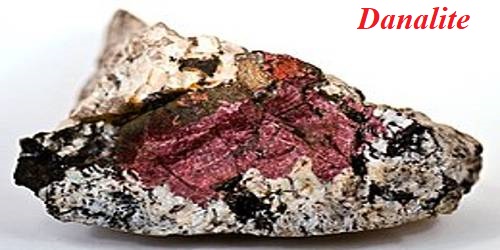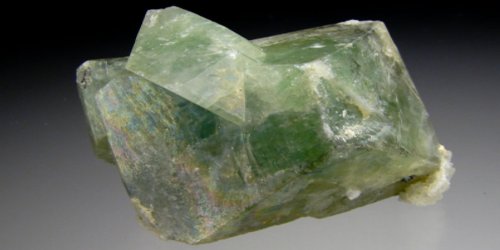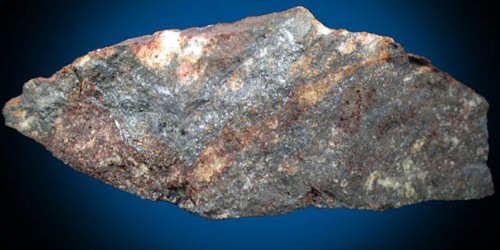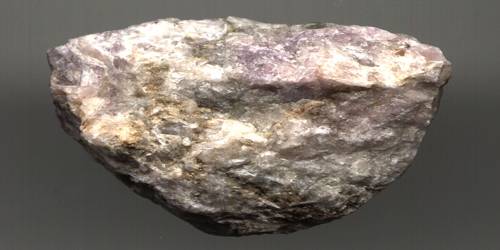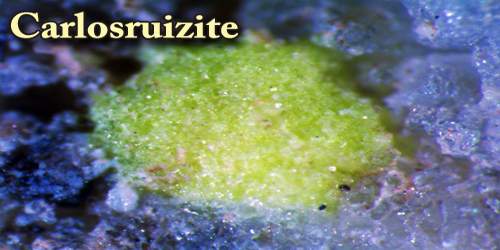Danalite is an iron beryllium silicate sulfide mineral with formula: Fe2+4Be3(SiO4)3S. It is beryllium-bearing, and found typically in tin-beryllium skarns, but also found in NYF style pegmatites as is this occurrence. It is a mineral that consists of a reddish or gray silicate and sulfide of iron and beryllium usually containing also zinc and manganese and that is isomorphous with helvite and genthelvite.
Danalite was first described in 1866 from a deposit in Essex County, Massachusetts and named for American mineralogist James Dwight Dana (1813–1895).
General Information
- Category: Sodalite – Feldspathoid
- Formula: Fe2+4Be3(SiO4)3S
- Crystal system: Isometric
- Crystal class: Hextetrahedral (43m)
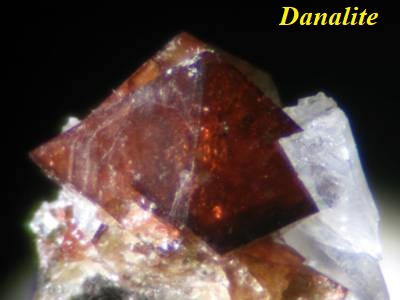
Properties
- Color: Yellow, pink, reddish brown, red: colorless to pink in thin section
- Crystal habit: Octahedral and dodecahedral crystals, typically massive or as segregations
- Fracture: Subconchoidal to uneven
- Tenacity: Brittle
- Mohs scale hardness: 5.5 to 6
- Luster: Vitreous or greasy
- Streak: Grey white
- Diaphaneity: Semitransparent
- Specific gravity: 3.28 – 3.46
- Optical properties: Isotropic
Occurrence: In granites, granite pegmatites, zones of contact metamorphism, skarns, and gneisses.
It is a rare mineral which occurs in granites, tin-bearing pegmatites, contact metamorphic skarns, gneisses and in hydrothermal deposits. It occurs in association with magnetite, garnet, fluorite, albite, cassiterite, pyrite, muscovite, arsenopyrite, quartz, and chlorite.
It has been found in Massachusetts, New Hampshire, Sierra County, New Mexico; Yavapai County, Arizona; Needlepoint Mountain, British Columbia; Walrus Island, James Bay, Quebec; Sweden; Cornwall, England; Imalka and Transbaikal, Russia; Kazakhstan; Somalia; Tasmania; Western Australia and Hiroshima Prefecture, Japan.
Information Source:
